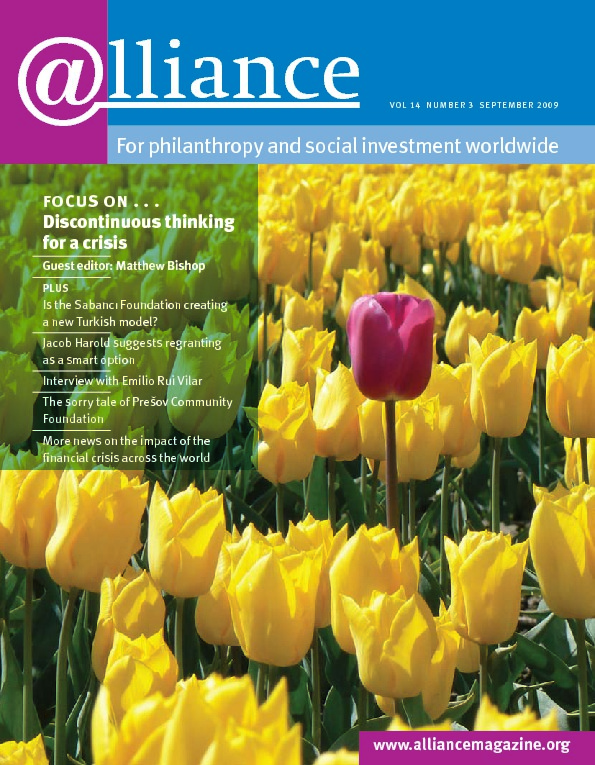How did it happen that this issue of Alliance has no less than three separate images of Barack Obama? Are we at Alliance suffering from a serious case of the Obama mania that Barry Gaberman cautions against in his column?
I willingly admit to sharing in the general upsurge of hope that overtook much of the world when Obama was elected as president of the United States last November, but that is not the reason for the photos. For me what they represent is the ever-changing context in which philanthropy operates – and Obama himself is defining much of that context. Happily, the economic crisis is not alone here. Gara LaMarche’s article in the June issue of Alliance, looking at US philanthropy’s response to Obama’s tax proposals – to which a range of people respond in this issue – brought into sharp focus the relationship between government and philanthropy as providers for the common good, in this case health care. When government moves across and takes a larger role, where does this leave philanthropy? Sonal Shah, head of the new White House Office of Social Innovation, says one of the aims of her new office will be ‘a better division of labour between what the government funds and what foundations fund’.
For Susan Bell, it is the new US administration rather than the economic crisis that has opened up new opportunities to make progress on climate change. Even Firoze Manji, who certainly doesn’t suffer from Obama mania, presents the election of Barack Obama, ‘the first person of African descent to become president of the United States’, as one of three events that has transformed our world – the others being the economic crisis and ‘a major crisis of confidence in the neoliberal ideologies of successive European and US governments’.
The special feature in this issue of Alliance, looking at ‘discontinuous thinking for a crisis’, focuses squarely on the context in which philanthropy is operating. We asked our contributors just two simple questions: how has the world changed? And what are the new opportunities for philanthropy?
Much is written about what one might term the mechanics of philanthropy and social investment: how to identify the best projects, how to scale up, to collaborate, to measure impact, and so on – and Alliance contributes its bit to this body of writing. But there is always a danger that the mechanics become all and the context and the point get lost. This issue of Alliance, as so clearly summed up by Katherine Fulton, focuses on the new context and the need to ‘rethink the roles and relationships of the sectors’ and catalyse bottom-up change by engaging citizens and empowering entrepreneurs. ‘The hour is already late,’ she says. ‘We had better hurry.’





Comments (0)